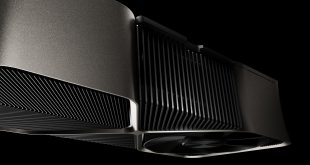
On February 15th AMD released their new HD7750 and HD7770 graphics cards targeting the mainstream enthusiast audience. On launch day we reviewed HD7770 and HD7750 cards from partners such as VTX3D, HIS and Sapphire. Our XFX sample was originally misplaced in the mail so we held fire until today to review two of their new HD7770 Black Edition cards in Crossfire along with their latest HD7750 Double Dissipation Edition.
I will admit that the launch of the HD7770 and HD7750 was a disappointment for me. While AMD managed to reduce power consumption with the latest iteration of cards, I felt that the curtailment of Stream Processors (from 800 on HD67xx to 640/512 on HD7770/HD7750) had a particularly negative impact on the overall performance. The core clocks may have been high, but it only helped to balance out throughput from the previous generation.
The only card that remotely impressed me on launch day was the Sapphire HD7770 1GHZ Overclock Edition. We have high hopes that a little bit of that XFX magic dust will settle on both of these cards today.
We are looking at two overclocked HD7770's from XFX, entitled the ‘Black Edition S' Super Overclocked with custom cooler.
Unlike Sapphire, XFX have opted for a two fan cooler, but have shrunk the fan sizes to fit. As I write this introduction I am not sure how that will translate to the real world, because small fans are generally not a good thing to see on any product. They have to spin faster and subsequently generally produce more noise.
The latest XFX cards really are beautifully designed. The silver top panel with dual fans is complimented by a red strip down the side, highlighting their ‘ghost technology'. We will look at the cards closely over the next couple of pages.
| Product | AMD HD7750 | AMD HD7770 | XFX HD7770 BE-S |
| Process | 28nm | 28nm | 28nm |
| Transistors |
1.5 billion
|
1.5 billion | 1.5 billion |
| Engine Clock |
800mhz
|
1000mhz | 1120mhz |
| Stream Processors |
512
|
640 | 640 |
| Compute Performance | 819 GFLOPS | 1.28 TFLOPS | 1.28 TFLOPS |
| Texture Units | 32 | 40 | 40 |
| Texture Filrate | 25.6 GT/s | 40.0 GT/s | 40.0 GT/s |
| ROPs | 16 | 16 | 16 |
| Pixel Filrate | 12.8GP/s | 16.0 GP/s | 16.0 GP/s |
| Z/Stencil | 64 | 64 | 64 |
| Memory Type | 1GB GDDR5 | 1GB GDDR5 | 1GB GDDR5 |
| Memory Clock | 1,125mhz | 1,125mhz | 1,300mhz |
| Memory Data Rate | 4.5 Gbps | 4.5 Gbps | 5.2 Gbps |
| Memory Bandwidth | 72 GB/s | 72 GB/s | 72 GB/s |
The XFX HD7750 is supplied with a nice custom cooler, but it is reference clocked. The HD7770 Black Edition S receives a core clock increase to 1120mhz, 120mhz faster than the reference design, but 30mhz slower than the Sapphire HD7770 1GHZ Overclock Edition.
They have also cranked the memory speed from 1,125mhz to 1,300mhz (5.2Gbps effective), which is faster than the 1,250mhz (5Gbps effective) on the Sapphire board. All other specifications remain the same.
 KitGuru KitGuru.net – Tech News | Hardware News | Hardware Reviews | IOS | Mobile | Gaming | Graphics Cards
KitGuru KitGuru.net – Tech News | Hardware News | Hardware Reviews | IOS | Mobile | Gaming | Graphics Cards





great looking cards. still a bit costly for what you get I think. Crossfire any better than it was a few years ago? nothing worked when I had two cards. (well worked the way it should have). That is why I moved to nvidia.
I wasnt impressed. but I can see the merit with two of them in Crosfire.
Have to ask. Would the people buying one of these really be able to afford two?
This is why crossfire makes sense. Obviously we have the rich guys who buy two high end boards to break benchmark scores, but back in the real world. you buy one, use it for a while, save up. then get another. you have high end card power for less money with less initial outlay.
First time ive seen a company sell a bundle, with two in it. with two free games those cards work out at £135. its not bad value considering.